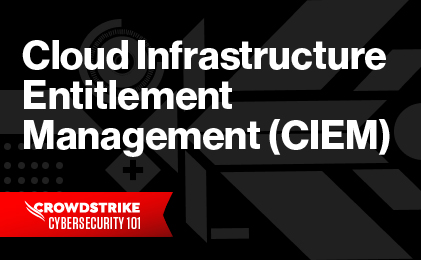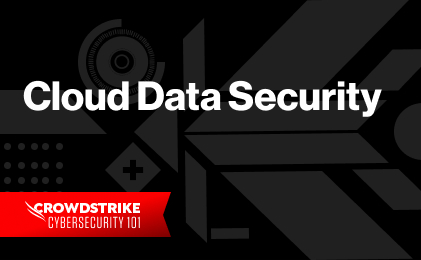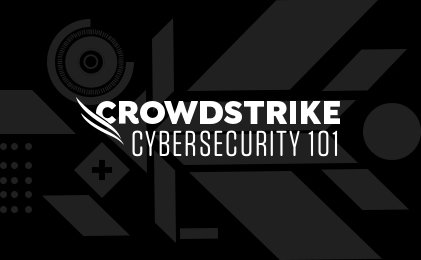What is cloud migration?
Cloud migration is the process of transferring all business data capabilities — such as applications, workloads, and IT processes — into a cloud computing environment, popularly referred to as “the cloud.” With today’s remote and hybrid working models, businesses are migrating to the cloud more than ever. In fact, 67% of enterprise infrastructure is now in the cloud, and 81% of companies have implemented a multi-cloud strategy or have the project in the works.1
Cloud computing has revolutionized how companies can think about and manage their IT infrastructure. The “cloud” and investing in cloud infrastructure give organizations a cost-effective and more efficient way for storing data, running software applications, increasing operational performance, engaging with other applications and services, and providing a better customer experience.
Cloud technology has enabled new businesses to launch with speed and existing organizations to innovate and deliver better products, services, and experiences. It has also prompted a new set of security parameters and threats. Innovation can include risks such as decentralized development and policy implementation, visibility gaps across various technologies, and the ever-dangerous “human factor” — in other words, shadow IT, poorly built architecture, and lack of knowledge and skill.
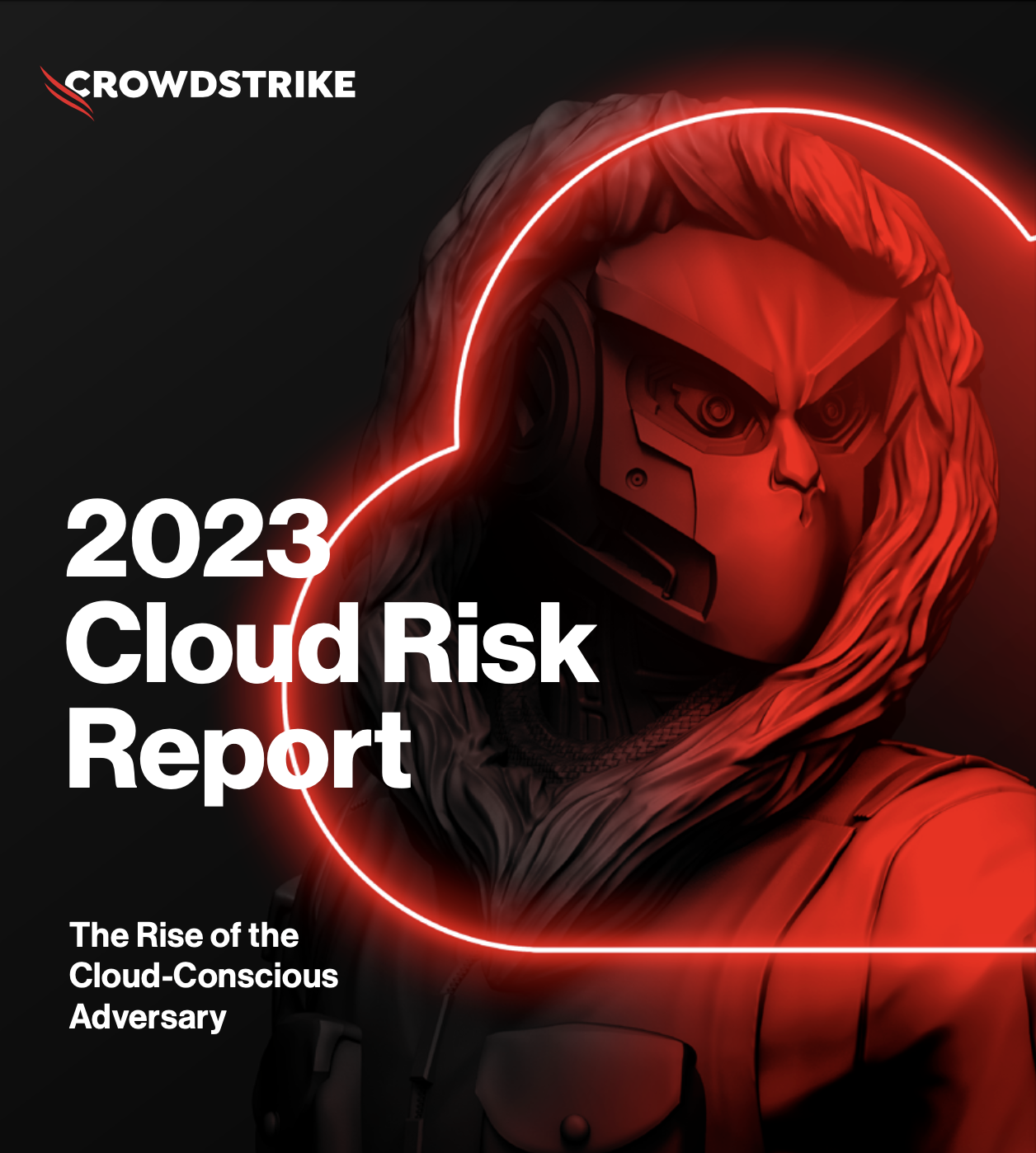
2023 Cloud Risk Report
Download this new report to learn about the most prevalent cloud security threats from 2023 to better protect from them in 2024.
Download NowCloud migration benefits
Businesses and organizations can enjoy many benefits from migrating to the cloud.
Flexibility
Cloud migration allows businesses to focus on their core competencies while leveraging the latest cloud technologies to improve their products and services. This flexibility makes it faster and easier for companies to adopt new business strategies and introduce new offerings to the market. Additionally, because you can access the cloud virtually from anywhere, it provides flexibility for stakeholders of an organization, such as employees, to access data and work from home.
Scalability
The cloud’s flexible nature allows businesses and organizations to easily and quickly scale their infrastructure up or down as needed. This is because cloud infrastructure is able to support a far larger number of users and workloads than on-premises infrastructure.
Security
The cloud has become increasingly popular in the business world, and because its use is so widespread, governments and industry leaders have had to enact security standards, policies, and compliance measures to ensure companies use cloud capabilities and private data in a responsible manner. This ensures that companies handling sensitive data make a continuous effort to keep data safe from adversaries.
Expert Tip
Stay up-to-date with the regulatory standards of cloud usage in accordance with local, national, and international laws.Cloud Compliance
Operational efficiency
When data is migrated to the cloud, it is stored in cloud data centers. It is easy for a company’s users with the right permissions to pull data from the cloud data centers and use it to complete any report, data request, or project in a timely manner. In contrast, when organizations have on-premises infrastructure, they may host data in multiple data centers that can be in different physical locations, and retrieving data can become a bottleneck.
Cost
Reduction in total cost of ownership (TCO) is one of the biggest benefits of cloud migration. By migrating to the cloud, businesses can significantly reduce the costs of IT infrastructure and maintenance while ensuring that their data is secure and accessible. The figures vary from company to company, but — on average — organizations can save 15% to 40% on infrastructure costs by migrating to the cloud.2
Learn More
Read this article to go in-depth into what cloud security is, it’s importance, security tips, and more.Everything you need to know about cloud security
Steps in the cloud migration process
Kicking off a cloud migration project requires strategy, planning, and risk analysis. Carefully executing each step in the project sets up companies for success.
1. Defining the strategy
Moving to the cloud is an important decision for any business, and it is essential to have a well-defined cloud migration strategy in place. Before marching into the cloud frontier, outlining the goals of the project will give you a clear understanding of the value and benefits you plan to gain from the migration. Additionally, it is important to consider the business cases for cloud migration — what cost savings or increased efficiency can you expect? By defining how you will measure success, you can ensure that the cloud migration initiative will be beneficial for your organization.
2. Current assessment of environment and discovery
After creating your cloud migration strategy, you should assess the existing infrastructure, application, and data landscape to plan the scope of the project. This requires a close examination of your current environment to determine which applications and data you want to include in the migration project. With a clear project scope in hand, you can then map out which workloads to migrate to which cloud location (if you’re leveraging multiple cloud service providers) and when. Determining the best migration timing should also factor in any business risk to ensure the move minimizes impact on the organization’s day-to-day operations and maintains your customers’ service levels.
3. Actual migration
Once you’ve assessed your environment and mapped out your migration plan, it’s time to do the heavy lifting and execute your migration. There are six main types of cloud migration that can be used: re-host, re-factor, re-platforming, revise, rebuild, and replace.
4. Post-migration upkeep
Following your migration, it’s important to establish a process to consistently monitor your new cloud platform to ensure that it’s secure, optimized, and meeting your capacity needs as you move forward. It also helps to monitor for changes to your cloud infrastructure and track compute needs over time. This will help your future planning and allow you to predict workload needs. Additionally, it’s important to stay focused on the success metrics you established at the outset of the project. Measuring business impact — to make sure you’re meeting and continuing to meet your established success metrics — is an important practice, as it helps ensure your cloud investment is supporting your goals and helping your business flourish.
Types of cloud migration
There are six main types of cloud migration companies and organizations can pick from, commonly referred to as the six Rs.
- Re-host: Also known as a “lift-and-shift” strategy, re-hosting consists of moving applications into the cloud using infrastructure as a service (IaaS) providers. Start relocating the simplest items first, and end with the most complex dependencies.
- Re-factor: Organizations going for this strategy will use a platform as a service (PaaS) provider to run their applications and will reuse frameworks and codes to do so.
- Re-platforming: This strategy involves making some changes to your existing applications as part of the migration so that they can run in the cloud more effectively. In this scenario, it’s most common to keep the core or main application architecture as is while making some modifications to better optimize the application’s performance in the cloud.
- Revise: With this strategy, developers will at the very least partially rewrite or expand on already existing code and deploy it using re-host or re-factor strategies.
- Rebuild: As the name suggests, a rebuild strategy consists of rewriting and remaking the architecture from zero using a PaaS provider. This is usually done to take advantage of modern PaaS capabilities, but it can be a labor-intensive process.
- Replace: This strategy consists of discarding previously used applications and using already-built and ready-to-use applications from software as a service (SaaS) vendors.
Challenges to cloud migration
Cloud adoption is a strategic approach that helps companies stay competitive in today’s digital world. However, there are several challenges companies need to take into account when considering a move to the cloud.
Migration complexities can include data transfer issues and compatibility problems with existing systems. If a legacy tool isn’t compatible with the cloud environment, it can cause difficulties during the transition process.
Cloud management requires careful planning and monitoring of resources to ensure the best performance and cost efficiency, and organizations must understand and manage the security and compliance implications of moving to the cloud. For navigating the security requirements for moving to the cloud, the shared responsibility model applies, but only 8% of IT and cybersecurity professionals indicate an understanding of the model.3 Put simply, the shared responsibility model dictates that the cloud service provider is responsible for securing the cloud itself and the organization is responsible for securing data and other assets they store in the cloud.
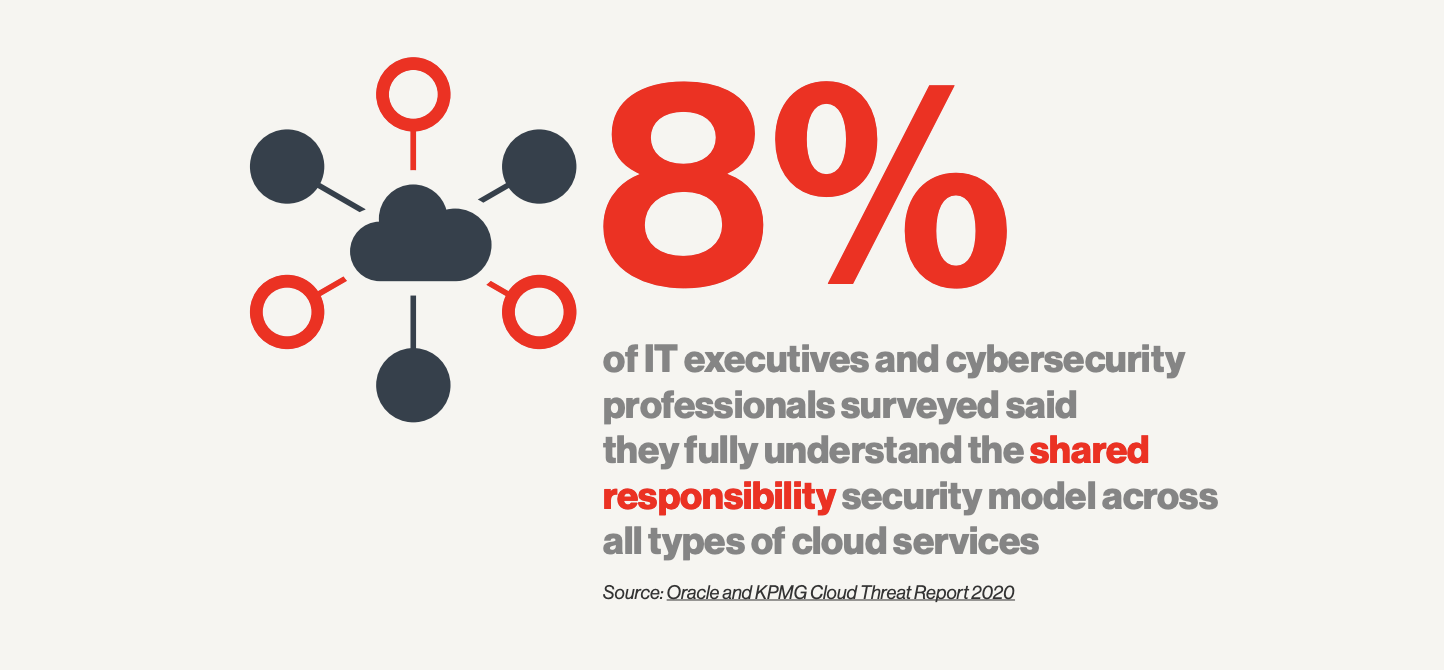
Other challenges include additional key dependencies such as third-party services or APIs that need to be taken into consideration when migrating data to the cloud. Finally, business support is essential for successful cloud migration as it ensures that all stakeholders are on board with the transition process.
Learn More
Read our post to learn about the 12 most common cloud security risks, threats, and challenges to keep an eye on. 12 cloud security issues
Tools and services required to migrate
Cloud migration tools and services are a great way to enable the cloud transition in a cost-effective, efficient, and secure manner. These tools make it easy to migrate data and applications without affecting business operations or creating downtime.
The most popular cloud migration tools are designed for the main IaaS platforms: AWS, Azure, and Google Cloud. These tools provide a range of features that help automate the process of migrating data from on-premises systems to the cloud, including automated versioning, migration scheduling, migration progress monitoring, and more. With these advanced features in place, businesses can ensure their cloud migrations are successful with minimal disruption. Additionally, these tools make the migration effort easier for users who may not have a deep technical knowledge of the underlying technology.
For those who want expert support to assist with their cloud migration, the big cloud security providers offer cloud migration services. Some of these services include the following:
| AWS Application Migration Service | Azure Cloud Migration Service | GCP Database Migration Service |
| Migration to Fully Managed AWS Databases | Azure Database Migration Service | BigQuery Data Transfer Service |
| AWS Database Migration Service | Application Migration Services |
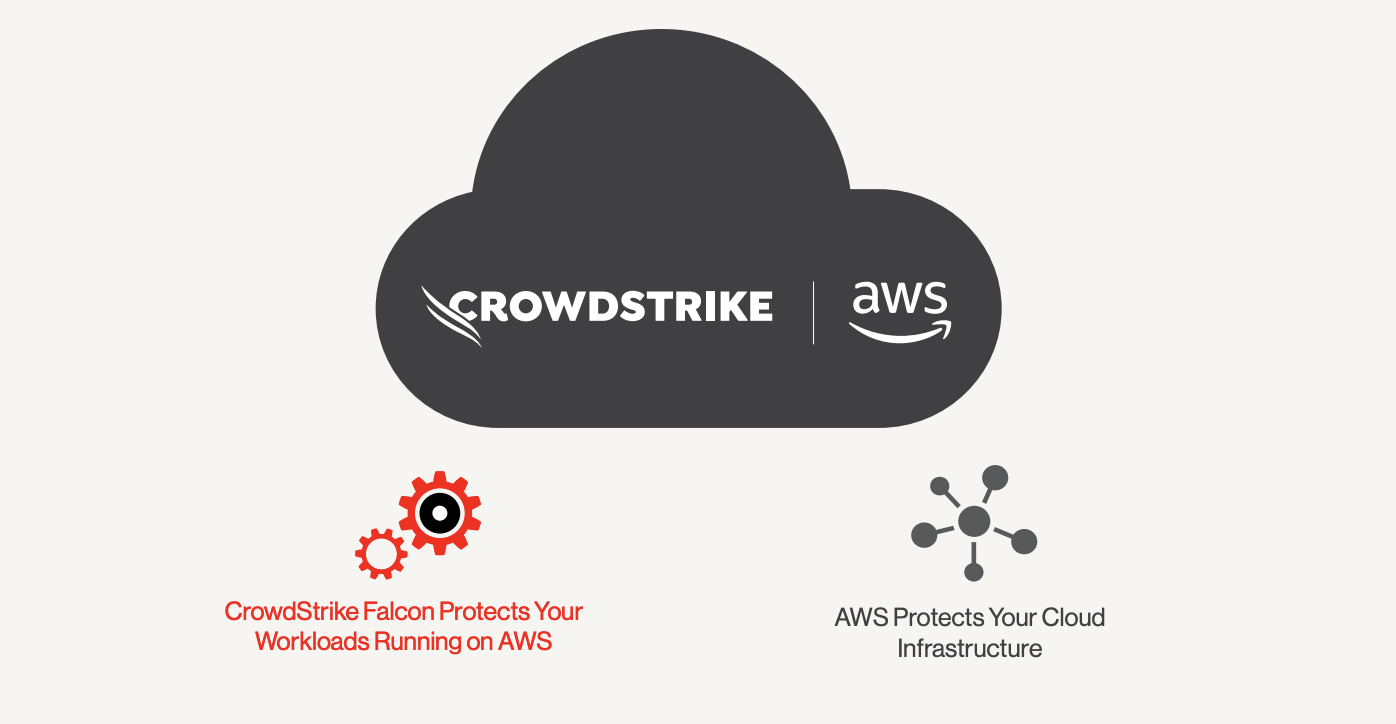
Ready to migrate? Here’s how CrowdStrike can help
The shared responsibility model makes it critically important to map out your security needs as you migrate to the cloud and manage your evolving cloud infrastructure. The shift to cloud architectures has introduced substantial changes to an organization’s attack surface, and cybercriminals are capitalizing on this. In fact, in 2022, 31% of organizations reported experiencing a security incident in the cloud.4
The responsibility for protecting a larger attack surface can create new security and operational challenges. CrowdStrike Falcon® Cloud Security secures your cloud migration while detecting, preventing, and remediating threats and misconfigurations in your hybrid or multi-cloud environment.
CrowdStrike also offers a fully managed cloud security service that leverages the power of the CrowdStrike Falcon® platform to deliver 24/7 expert security management and threat hunting. CrowdStrike Falcon® Complete Cloud Security managed detection and response helps ensure you are maximizing the benefits of the cloud while enforcing compliance and securing your applications. The services are also backed by CrowdStrike’s industry-leading Breach Prevention Warranty.
No matter where you are in your cloud journey, CrowdStrike is here to secure your digital transformation.
Learn more about CrowdStrike Falcon Cloud Security
1 SaaSworthy. Cloud Computing Statistics in 2023. January 2023.
2 Otava. Statistics of Cloud Adoption and Migration. June 2022.
